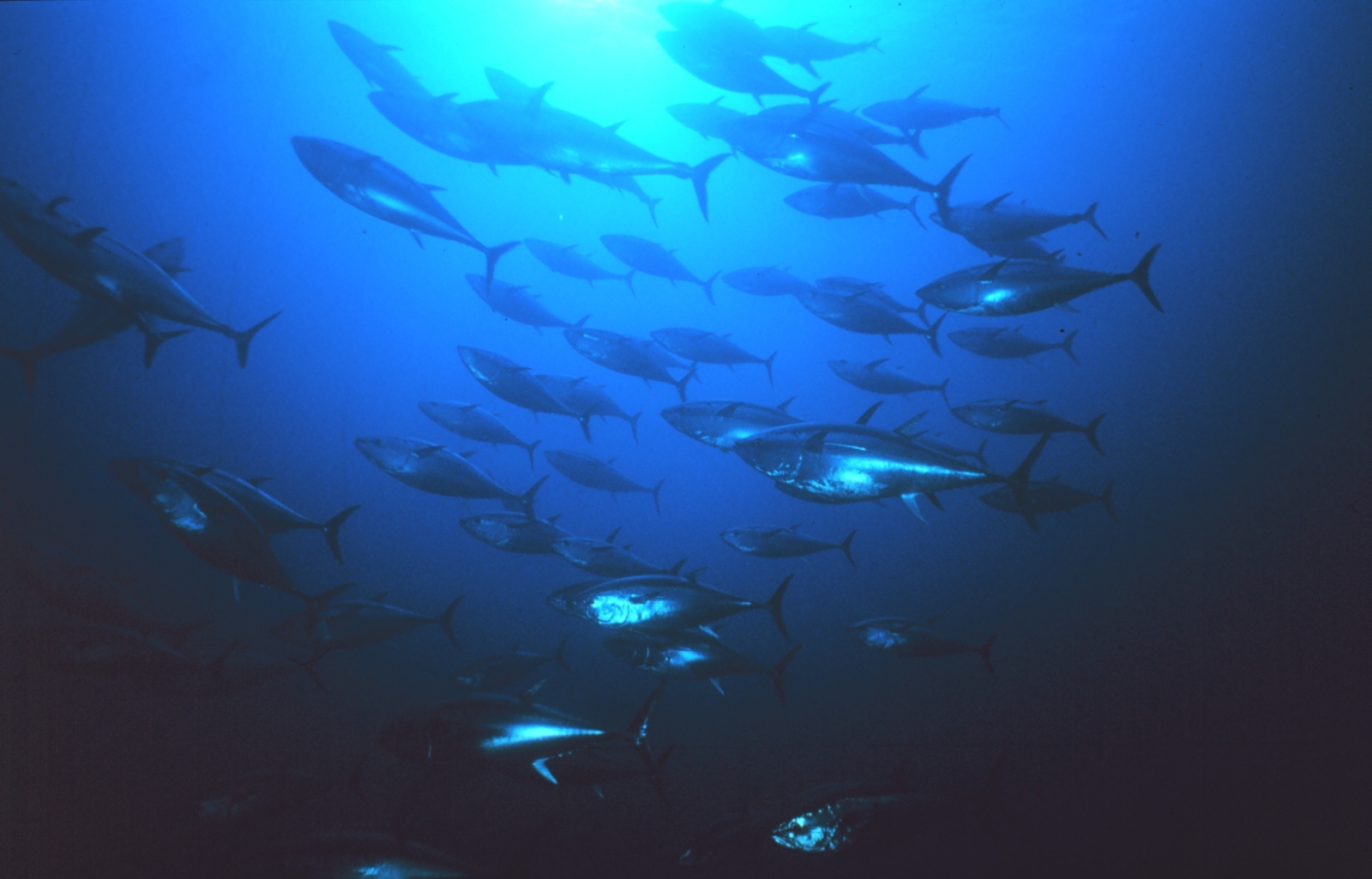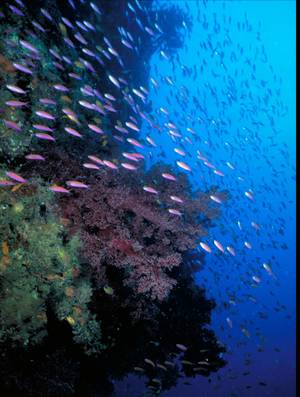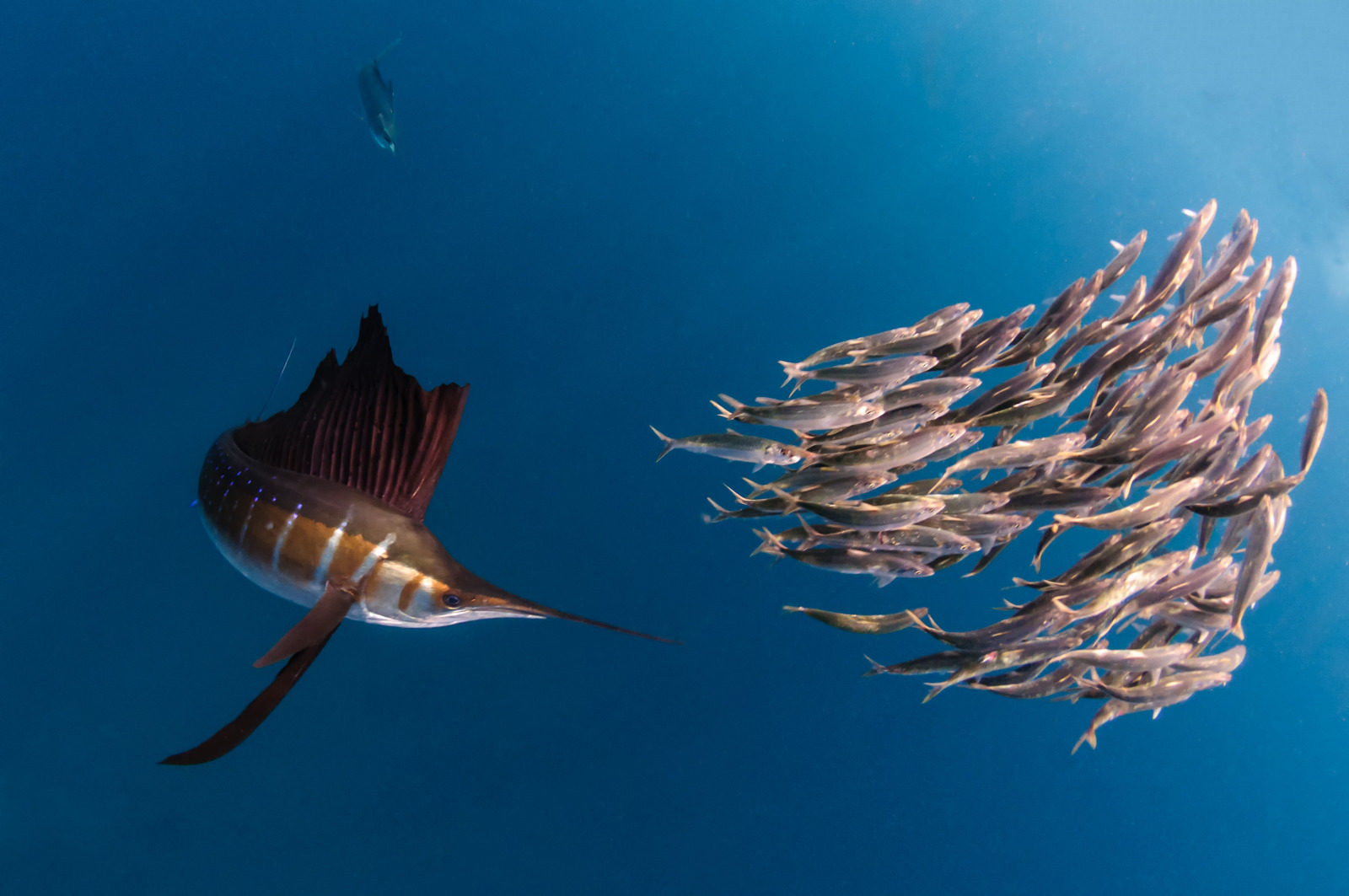I remember walking into my classroom on my first day at a new school and, with some trepidation, carefully mulling over my choice of desks. At that age, your position in the classroom says so much about you, to both the teacher and your fellow classmates. You don't want to sit too close to the front and risk being labeled a teacher's pet by your pool of potential new friends, yet sitting too close to the back has its own perils, as your teacher may assume you are a troublemaker or a wallflower.
Like kids in a classroom, fish have to carefully choose their position in the group to maximise the benefits of collective-living, while limiting its tradeoffs. Collective group-living is particularly common in the marine environment, with over half of all fish species in the world's oceans living in coordinated fish groups, called schools, at some point during their lives. Individuals in schools gain a variety of benefits in avoiding predators, learning about food resources and reducing energetic costs; however, each position in the school maximises certain benefits at the expense of others.

Fish can occupy one of four regions in the school: front edge (leader), back edge (follower), front centre or back centre. When choosing a region to occupy, fish must prioritise their safety, as none of the other benefits of schooling are particularly helpful if they end up in a predator's stomach! Inevitably, when predators attack the group, they are going to pick off the individual that is most accessible. Therefore, the fish in the edge positions are most vulnerable to being eaten.
However, edge positions confer another important advantage: food! Those individuals that swim on the edge will eat all the best and tastiest food, particularly those fish that swim at the front, leaving the less desirable scraps for those individuals in the centre. In addition, the fish leaders at the front edge of the school guide the others where they want to go, dictating where the rest of the school will feed and on what types of food. Like picking a restaurant, they then get to pick the type of food they like or need to maximise their energetic inputs.
However, with this greater decision-making power comes some cost. Like the  aerodynamic advantages birds gain from flying in a v-shaped formation, fish swimming at the back of the school gain hydrodynamic advantages from swimming in the eddies produced by leading fish. This behaviour allows individuals to reap energetic benefits, as they expend less energy while swimming at the same speed as leading fish at the front.
aerodynamic advantages birds gain from flying in a v-shaped formation, fish swimming at the back of the school gain hydrodynamic advantages from swimming in the eddies produced by leading fish. This behaviour allows individuals to reap energetic benefits, as they expend less energy while swimming at the same speed as leading fish at the front.
One negative aspect of schooling, particularly in a large and tightly-packed school, is a reduction in water quality. The fish at the front of the school suck up much of the fresh oxygen from the water while they are swimming, leaving reduced oxygen concentrations for those fish at the back. This effect is like being in a small elevator packed wall to wall with people. The oxygen content of the air diminishes as the group breathes. Therefore, the fish at the front have more oxygen to feed the needs of their muscles while they are swimming, which allows them to perform better than the oxygen-poor fish further back in the school.
Due to this variety of tradeoffs, individual fish can take advantage of different positions depending on the situation. Many studies have suggested that fish shuffle between positions depending on their needs at any given time. For instance, when fish are hungry, they may value first dibs on the tastiest food items over safety and therefore prefer leader positions. Or when predators are bountiful and risk is therefore high, individuals may clamber to the centre of the school for protection.
Exciting new research suggests that although position preference may be in part context-specific, this is not the whole story. A slew of studies are finding that individuals exhibit consistent preferences for leader or follower positions. This idea was first suggested by the scientist Tony Pitcher and his colleagues in 1982. They observed that the individuals in a school of Atlantic mackerel exhibit a reliable preference for one region of their school or the other ("inner or outer location"), but suggested that this idea should be examined in further detail.

In a study published last year, Stephano Marras and Paolo Domenici of the Istituto per l'Ambiente Marino Costiero - Centro Nazionale delle Ricerche (Italy) examined whether these positional preferences would remain when a school responded to a simulated predator attack. They found that fish in a school react to a threat in a non-random order, with certain individuals consistently initiating the evasive manoeuvres of their school. Those first-responders were also more likely to occupy the leader positions when the school was casually swimming around in a low threat environment. In addition, those fish that reacted slower were also more likely to be followers.
But what factors may be influencing a fishes' positional preference in a school? Fish biologists have been trying to tease this question apart. Could there be some innate reasons for preferentially choosing one position over another? A number of exciting and innovative recent studies suggest that this may be the case.
Like humans, some fish are natural born athletes while others struggle to keep up. For this reason, Shaun Killen of the University of Glasgow (Scotland) thought positioning in fish schools could be related to an individual's metabolic fitness. "One of the main benefits of schooling behaviour is that it reduces the energy that fish use to swim," said Killen. "We thought fish that are better swimmers within a school might be more likely to take up positions near the front of the group, while worse swimmers might stay toward the back of the group where they could use less energy to swim."
And he was right: Killen and colleagues found that metabolic fitness was often a reliable predictor of an individual's preferred position. Individuals with the greatest metabolic potential were more likely to lead the school while those less fit fish were more likely to take advantage of the hydrodynamic advantages of swimming towards the back. Interestingly, higher basal metabolic rates (which indicates the minimum amount of energy required to sustain bodily functions) did not seem to encourage fish to lead, indicating that these individuals may be prioritising ease of swimming (and lower energy expenditure) over access to a greater quantity of prime food items. This discovery that positional preference may have a physiological basis was astounding and helped to fundamentally change scientists' perspective on the complexity of interactions between fish in schools.
a reliable predictor of an individual's preferred position. Individuals with the greatest metabolic potential were more likely to lead the school while those less fit fish were more likely to take advantage of the hydrodynamic advantages of swimming towards the back. Interestingly, higher basal metabolic rates (which indicates the minimum amount of energy required to sustain bodily functions) did not seem to encourage fish to lead, indicating that these individuals may be prioritising ease of swimming (and lower energy expenditure) over access to a greater quantity of prime food items. This discovery that positional preference may have a physiological basis was astounding and helped to fundamentally change scientists' perspective on the complexity of interactions between fish in schools.
But could position within the school also have a genetic basis? That was the question that Anna Greenwood, Catherine Peichel and their colleagues from the Fred Hutchinson Research Center (USA) attempted to unravel. "We are very interested in identifying the precise genetic and neural changes that lead to the difference in schooling position," said Peichel. "This will help us understand the mechanisms that underlie the evolution of schooling behaviour." Using a temperate fish species called the three-spine stickleback, Greenwood, Peichel and colleagues found that positioning had a significant correlation with the sequences of a variety of genomic regions. This interesting result suggests that positional preference may be, at least in part, genetic and therefore heritable from the parents.
In addition to these metabolic and genetic traits, scientists have now begun to investigate the effects of an individual's psychological traits on their propensity to lead or follow. "Group members often differ considerably and consistently from one another in how they cope with their environment, also known as animal personality," said Jolle Jolles of the University of Cambridge (England). Jolles' recently published work on fish pairs found that bolder fish were more likely to lead the pair in their collective behaviours than shyer fish, indicating that positional preference may depend on both the current social context and the diversity of personality types in the group. Jolles is currently researching this topic in larger fish groups and finding similar trends. "I think there is lots of exciting work to be done to further understand the role of...personality differences in the mechanisms that govern the organisation, dynamics and functioning of social groups."
References
- Previous Trick or treat!
- Next Naked Scientists Training for Engineers









Comments
Add a comment